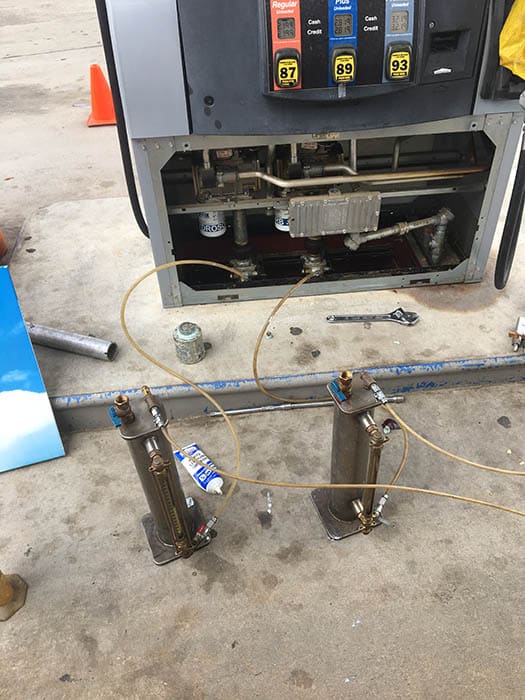Line Tightness Testing
At Georgia Oilmen’s Services, our comprehensive line tightness testing services include assessing the health of your pipes – everything from pipe leak detection to the health of internal components. Underground storage tanks often include either suction piping or pressurized piping, and the characteristics of your piping system will influence the testing requirements. Worth noting is that leak detection for piping often differs from tank tightness tests.
Serving Georgia, Florida and Alabama, our team ensures that the regulatory requirements for both suction and pressurized piping are checked and tested. To learn more and to speak to one of our team members about your testing needs, fill out a quick contact form or call to speak to one of our team members today at (678) 225-4558.
Suction Piping Testing Requirements
- All tests must be able to detect a leak at least as small as 0.1 gallon per hour with certain probabilities of detection and of false alarm.
- No leak detection is required if the following pipe design characteristics are present:
- Adequate slope in the pipe so that the product can drain back into the tank if suction is released
- Presence of only one check valve that is located as close as possible underneath the pump in the dispensing unit
- If a pipe system fails to meet this design criteria, then the piping must be tested according to the following regulations:
- A line tightness test must be performed at least every three years OR one of the following:
- Monthly interstitial monitoring
- Monthly vapor monitoring
- Monthly groundwater monitoring
- Monthly statistical inventory reconciliation
Pressurized Pipe Testing Requirements
- Each pressurized piping run must have one of the following automatic line leak detection (LDD) methods:
- Automatic flow restrictor
- Automatic flow shutoff
- Continuous alarm system
- Each pressurized piping run must have one of the following additional methods of leak detection:
- Monthly interstitial monitoring
- Monthly vapor monitoring
- Monthly groundwater monitoring
- Monthly statistical inventory reconciliation
- Annual tightness test
Required Testing Capabilities for LLDs
The automatic line LLD must be designed to detect a leak at least as small as 3 gallons per hour at a line pressure of 10 pounds per square inch within 1 hour by shutting off the product flow, restricting the product flow or triggering an audible or visual alarm.
The line tightness test must be able to detect a leak at least as small as 0.1 gallon per hour when the line pressure is 1.5 times its normal operating pressure. The test must be conducted each year. If the test is performed at pressures lower than 1.5 times operating pressure, the leak rate to be detected must be correspondingly lower.
Automatic LLDs and line tightness tests must also meet the federal regulatory requirements regarding probabilities of detection and false alarm. Interstitial monitoring, vapor monitoring, groundwater monitoring and statistical inventory reconciliation have the same regulatory requirements for piping as they do for tanks.
Request a Quote
Ready to schedule a consultation for your tank testing needs? We’re happy to help. Contact us today!

